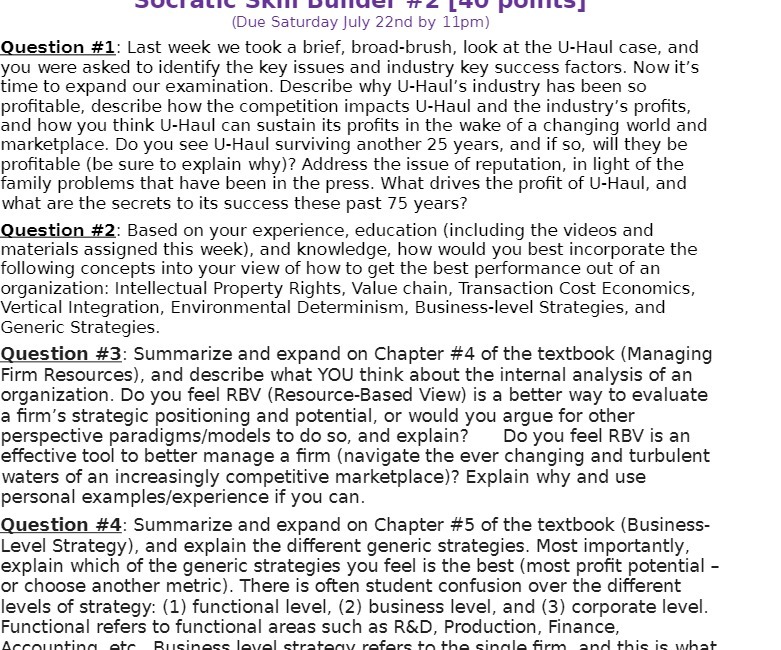(Due Saturday July 22nd by 11pm) Question #1: Last week we took a brief, broad-brush, look at the U-Haul case, and you were asked to identify the key issues and industry key success factors. Now it's time to expand our examination. Describe why U-Haul's industry has been so profitable, describe how the competition impacts U-Haul and the industry's profits, and how you think U-Haul can sustain its profits in the wake of a changing world and marketplace. Do you see U-Haul surviving another 25 years, and if so, will they be profitable (be sure to explain why)? Address the issue of reputation, in light of the family problems that have been in the press. What drives the profit of U-Haul, and what are the secrets to its success these past 75 years? Question #2: Based on your experience, education (including the videos and materials assigned this week), and knowledge, how would you best incorporate the following concepts into your view of how to get the best performance out of an organization: Intellectual Property Rights, Value chain, Transaction Cost Economics, Vertical Integration, Environmental Determinism, Business-level Strategies, and Generic Strategies. Question #3: Summarize and expand on Chapter #4 of the textbook (Managing Firm Resources), and describe what YOU think about the internal analysis of an organization. Do you feel RBV (Resource-Based View) is a better way to evaluate a firm's strategic positioning and potential, or would you argue for other perspective paradigms/models to do so, and explain? Do you feel RBV is an effective tool to better manage a firm (navigate the ever changing and turbulent waters of an increasingly competitive marketplace)? Explain why and use personal examples/experience if you can. Question #4: Summarize and expand on Chapter #5 of the textbook (Business- Level Strategy), and explain the different generic strategies. Most importantly, explain which of the generic strategies you feel is the best (most profit potential - or choose another metric). There is often student confusion over the different levels of strategy: (1) functional level, (2) business level, and (3) corporate level. Functional refers to functional areas such as R&D, Production, Finance, the a fir this







